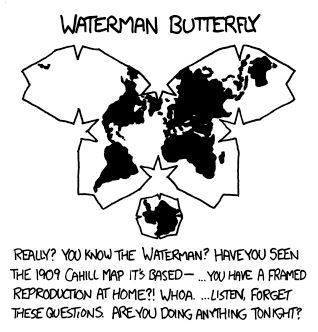

Redirects or mirror used in a block will usually specify who is hosting the warning
Cryptography nerd
Fediverse accounts;
Natanael@slrpnk.net (main)
Natanael@infosec.pub
Natanael@lemmy.zip
Lemmy moderation account: @TrustedThirdParty@infosec.pub - !crypto@infosec.pub
@Natanael_L@mastodon.social
Bluesky: natanael.bsky.social


Redirects or mirror used in a block will usually specify who is hosting the warning
Yes, but not as widespread.
Multiple toolmaking skills has been lost and had to be rediscovered. Metalworking, mechanical computers (clockworks), etc.
Secrecy in trades and lack of documentation used to be the main cause. Now the cause is lack of interest…
Interviewers look for excess confidence, not skill
Now you have to reread this too


Some people only browse global feeds and downvote stuff as if they’re trying to train the Netflix recommendation algorithm, completely ignoring the rules of the community it originates from


Hashing alone if it’s just usernames isn’t enough. Need something like keyed hashes, but then malicious servers can lie about numbers of votes.
Otherwise you need something ridiculously overengineered like public but encrypted logs of user actions and Zero-knowledge proofs of correctness mapping everything to a distinct existing user without revealing who it is.
As I mentioned in another post: for consistency is better to have each server count total votes from their own users, send a signed & timestamped message with the count to the host of the post being voted on. Then the host can display a consistent vote count to everybody that shows where votes are coming from without manipulation of external votes.
Each individual server can lie about its count, but not by too much or else it will be detected and the server can get defederated (or have its votes ignored).


Especially in federated networks where the data isn’t under access control, doubly so if the privacy extension is optional
The steam controller didn’t really fail, but the patent fight was a mess that took way too long (much too late disqualified patent over paddle buttons). That sucked a lot of energy out of the project. Don’t forget the steam deck kept those touch pads (although with a different design)!
Steam Link IMHO also wasn’t bad, but there didn’t seem to be much interest in it then. (interestingly enough I think it could be recreated today in a Chromecast-like form factor)
Stream machines was definitely a big mess however, there just wasn’t enough interest, too limited compatibility, the machines just wasn’t versatile enough for average Joe to pay for one.
“yes”? He’s definitely not building any significant fraction himself, but if he didn’t care for these things he wouldn’t let the company put so much resources into them.
Credit for the things built goes to the people building them. Credit for it being possible to build goes to the people who founded and funded the teams


Varies between games, it’s common there’s features missing so it’s not equivalent but often Linux has remained faster when equivalent because its implementation is more efficient. Unless you’re dealing with ray tracing and other recent fancy stuff.


Physical size is just a parameter, unless you insert formatting and stuff which needs to save data per page/region. Otherwise you can have just vector graphics of fixed data size which gets scaled on rendering to fit the physical limit.

If it’s a type of enemy you see just one of at a time but see it often, sure. If there’s many, cost of copy/delete is definitely not that high relatively speaking.
(random sidenote: in the first Mirror’s Edge game, you can sometimes hear enemies you passed scream as they fall when you pass from one part of a map to another, as the ground in the map is unloaded before the enemies unload)

If they literally don’t have an object delete option then relying on render distance to make it go away is a ridiculous but simple solution

Definitely depends on the type of game, but it’s more likely the game stores data about which areas you cleared and then infer that the bodies of any permanently remaining enemy (like bosses) is to be displayed.
Can vary even more for procedurally generated levels. If the set of enemies is fixed and stay in calculated positions in a map generated randomly, then it might store an array or something tracking the enemies.

Depends on optimization levels, data types, and whatnot. If it’s a string to be fed into the API of a different binary then the compiler will often not optimize down that representation. Internal function names are likely to be optimized that way, with lookup tables holding original function names (at least for any externally exposed function).

Hard to kill zombie process


The postage stamp asked strangers to lick its behind!


Did it stop coolant leak though?


On the other hand, Trump’s FAA has made airplanes do impromptu land acknowledgements
As long as these types pay attention to what the scientists tell them and explain it to others accurately, they’re helpful